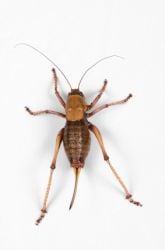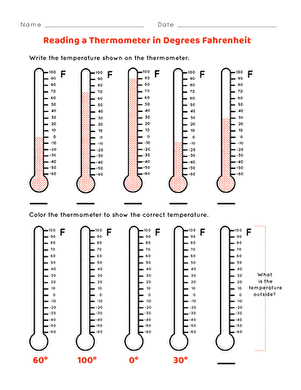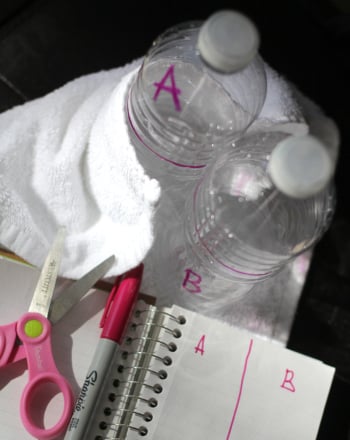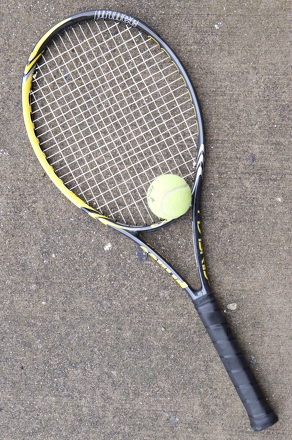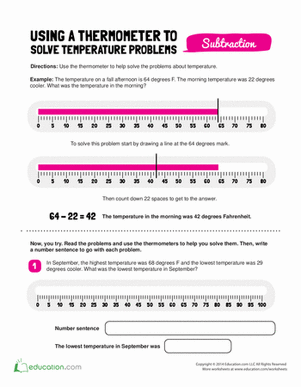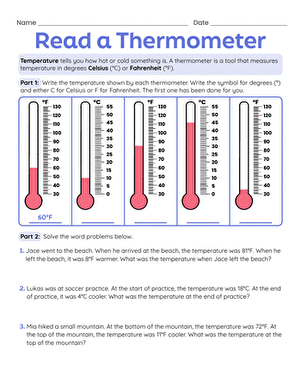Activity
Accuracy Deviation of the Cricket Thermometer
Crickets chirp at regular intervals. The length of the interval depends upon the temperature. This project is not necessarily to demonstrate that this is true- it is- but to quantify exactly how accurate the cricket thermometer is.
Research Questions:
- Why do crickets chirp?
- When do crickets chirp?
- What is the relationship between chirping rate and temperature?
- What is ‘percent error?’
- What is the difference between an expected and experimental value?
Male crickets chirp. We’ve all heard them on lazy afternoons and into the evening. It is, in fact, only males that chirp. The chirp that we hear is the mating call. Crickets are also cold-blooded, meaning that they take on the ambient temperature. Consequently, they are able to move and do things faster when the temperature is higher, including chirping.
It has long been known that you can determine the temperature by counting the chirps- the equation for this was first published in the Farmer’s Almanac well before the 1900’s. The question is how accurate is the cricket thermometer?
Materials:
- Crickets
- Cricket habitat (covered box or aquarium)
- Shallow water dish (a Tupperware lid will do)
- Food ( most any table scraps will do, fruit being the best.)
Experimental Procedure:
- Buy the crickets.
- Place the crickets into their habitat. Make sure they are fed and have access to water.
- Give them a day or two to settle in and observe them. Determine when they chirp the most, and set that as a time to take data.
- Place your thermometer in the habitat.
- Record the temperature.
- Listen to ONE cricket. Record how many times he chirps in one minute.
- Use the chirping equation to determine the ‘cricket’ temperature.
- Plug the ‘cricket’ temperature and the ‘thermometer’ temperature into the percent error equation.
- Repeat steps 4-8 at different ambient temperatures.
- Graph the data. A line graph with temperature on the X-axis and percent error on the Y-axis will show how the accuracy changes at different temperatures.
Another option for analysis is to perform a Standard Deviation. It is probably too complex to describe here, but if you have a knack for math and want to perform a more thorough data analysis (and have a more impressive project) refer to the links in the bibliography on how to do one.
Terms/Concepts: Cricket Chirping; Cricket thermometer: Percent Error; Standard Deviation; Ambient Temperature; Nocturnal; Mean (mathematical average)
Equations Needed:
- Cricket thermometer: T = N/4 + 40, where T= temperature in F, and N= Number of chirps per minute.
- Percent Error: % error = | your result - accepted value | / accepted value x 100 %, where the accepted value in the actual temperature as read off of a thermometer and your result is the ‘cricket thermometer’ value.
- Standard Deviation (optional) : See URL(s)
References:
Feeding Crickets http://ezinearticles.com/?What-Do-Crickets-Eat?&id=138516
Percent Error http://www.jesuitnola.org/upload/clark/labs/pererror.htm
A Basic explanation of Standard Deviation http://www.robertniles.com/stats/stdev.shtml
A simple How-To for Standard Deviation http://hubpages.com/hub/stddev
Education.com provides the Science Fair Project Ideas for informational purposes only. Education.com does not make any guarantee or representation regarding the Science Fair Project Ideas and is not responsible or liable for any loss or damage, directly or indirectly, caused by your use of such information. By accessing the Science Fair Project Ideas, you waive and renounce any claims against Education.com that arise thereof. In addition, your access to Education.com's website and Science Fair Project Ideas is covered by Education.com's Privacy Policy and site Terms of Use, which include limitations on Education.com's liability.
Warning is hereby given that not all Project Ideas are appropriate for all individuals or in all circumstances. Implementation of any Science Project Idea should be undertaken only in appropriate settings and with appropriate parental or other supervision. Reading and following the safety precautions of all materials used in a project is the sole responsibility of each individual. For further information, consult your state's handbook of Science Safety.


